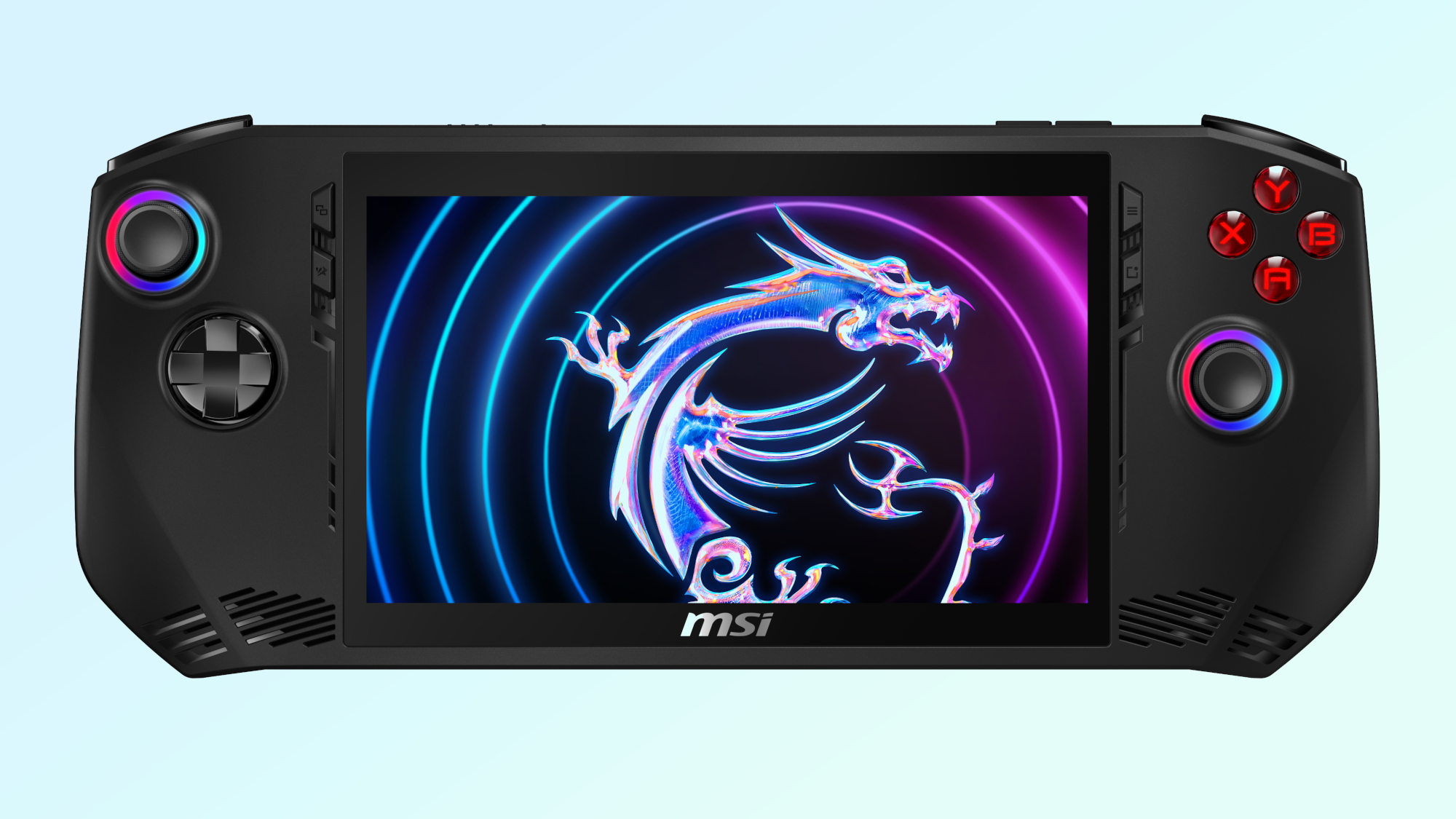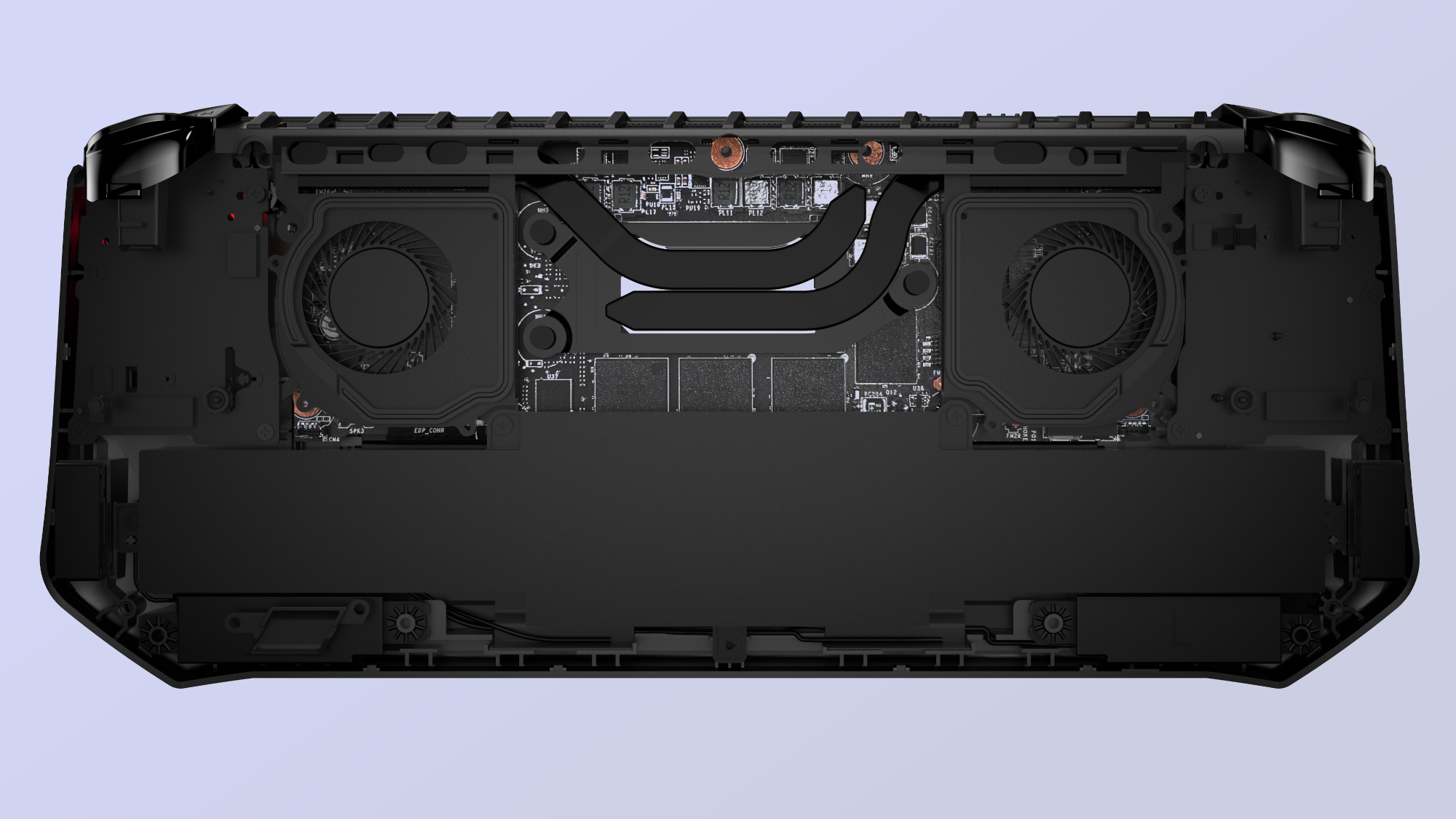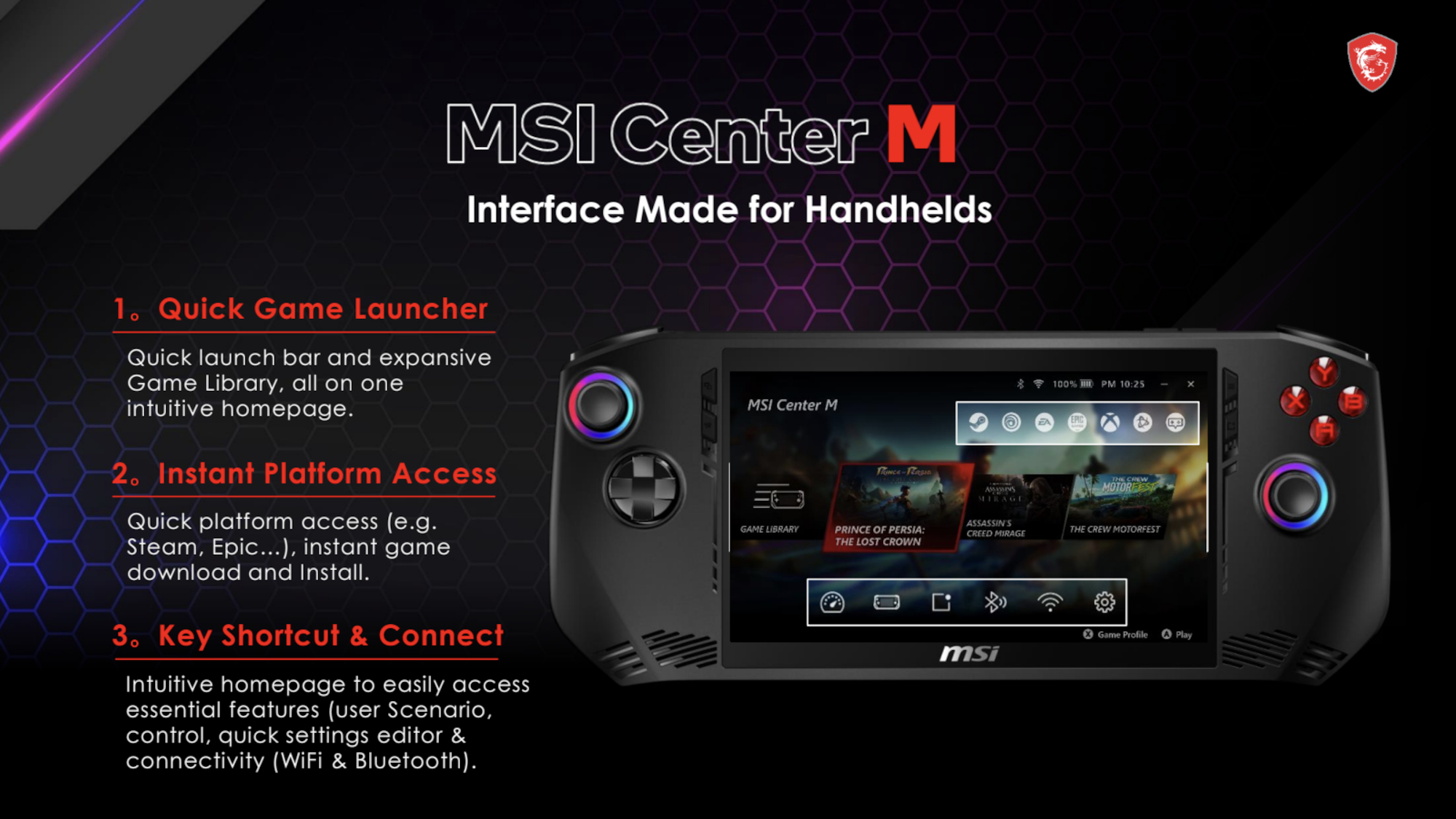MSI Claw: Specs, design, interface and more

The MSI Claw is the next handheld gaming console looking to topple the Steam Deck. Announced during CES 2024, MSI’s upcoming device is the first handheld powered by an Intel Core Ultra “Meteor Lake” CPU.
MSI says the chip’s XeSS upscaling technology will “significantly” boost frame rates. On top of that, the MSI Claw also promises to have longer battery life than its rivals thanks to its advanced cooling technology.
Like the Asus ROG Ally and Lenovo Legion Go, the MSI Claw runs on Windows 11. The ubiquitous Microsoft operating system should allow this handheld to play the best PC games. The Claw can also play the best Android games.
MSI’s handheld features a 7-inch 120Hz and a similar ergonomic design — another similarity to the ROG Ally. There's RGB lighting on board the MSI Claw for good measure.
The MSI Claw seems like a promising device. After all, MSI makes some of the best gaming laptops and best gaming PCs. The pedigree is there, but that doesn’t guarantee a superior handheld to the Steam Deck, as we’ve seen with the great but flawed ROG Ally and Legion Go. If the MSI Claw delivers better performance, battery life and a superior launcher than its competitors, it could be one of the best handheld gaming consoles out there.
Here’s everything you need to know about the MSI Claw.
MSI Claw: Price and release date
The MSI Claw comes in several configurations. The starting model costs $699 (the same price as the ROG Ally) and has a 7-inch LCD 1,920 x 1,080 120Hz display, an Intel Core Ultra 5 CPU, 16GB and 512GB of SSD storage. It launches in the U.S. on March 15 and March 20 in the United Kingdom.
Get instant access to breaking news, the hottest reviews, great deals and helpful tips.
For $749, you can upgrade to an Intel Core Ultra 7 CPU. This model also has 16GB of RAM and 512GB of storage, and actually launches a week sooner on March 8 in the States. A 1TB version of the Ultra 7 model launches on March 15 for $799. All models have the same 7-inch 1080p LCD display.
MSI Claw: Design

The MSI Claw isn’t doing anything radical with its design. While the nearly all-black chassis with its red flourishes is sleek and elegant, the machine looks like most other handhelds out there. It has the requisite analog sticks, face buttons and shoulder buttons you’d find on a PS5 or Xbox Series X controller. If you’re a lifelong gamer, acclimating to the Claw’s controller layout shouldn’t pose an issue.
There are four smaller function buttons on either side of the display. This includes the View (select) button and MSI Center M button on the left, and Menu and Quick Settings button on the right. RGB lighting around the base of the analog sticks and underneath the four face buttons gives the handheld a bit of flair.

Most of the MSI Claw’s ports rest along its top. This includes a power button/fingerprint reader, a microSD card reader, a Thunderbolt 4/USB-C, an audio jack and volume buttons. There are also a pair of programmable buttons on the back.
Air vents reside along the handheld’s top beside the ports. Smaller vents flank the bottom of the screen. You’ll find the largest vents over on the back, with a red claw mark underneath the right-side vents. All of these vents should provide good airflow for the MSI Claw. The vents’ placement should also prevent you from accidentally touching them when you’re playing.

At 11.5 x 4.6 x 0.8 inches and 1.4 pounds, the Claw is comparable to devices like the ROG Ally and AyaNeo 2S in terms of size and weight. MSI says it has “polished various design details, from the curvature that fits the palm, to the finger grip positions and trigger force.”
In our MSI Claw hands-in review, we didn't quite have enough time with the device to determine just how comfortable it will prove over extended gaming sessions, but it feels a lot like the ROG Ally and AyaNeo 2S to hold.
MSI Claw: Specs

Many of the Windows 11 handhelds we've reviewed feature an AMD processor. However, the MSI Claw is the first to sport an Intel Meteor Lake CPU. Most conversations about Intel’s new chip have centered around its AI capabilities that we learned about during the company’s AI Everywhere event where Meteor Lake debuted. But given how Meteor Lake chips borrow features from Intel Arc GPUs, the new processor should also be adept at handling handheld games.
To be specific, Meteor Lake chips utilize Intel XeSS technology. Like AMD FSR and Nvidia DLSS, XeSS renders scenes in a game at a lower resolution than the display (so it can do the work faster and better), then uses machine learning to "upscale" the scenes to the display resolution. This should allow games to run at higher frames per second to provide smoother overall gameplay.
In addition, the MSI Claw has 16GB of RAM and up to 1TB of SSD storage. 16GB of RAM is fairly standard for gaming handhelds and laptops, so that’s not too surprising. You can configure the Claw with up to 1TB of storage, which leads me to believe the base model will have at least 512GB like the Steam Deck and ROG Ally.
During our hands-on with the MSI Claw Assassin’s Creed Mirage looked amazing and was buttery smooth to play, though without a frame counter to inspect, we couldn't tell you exactly what fps the game was running at.
MSI Claw: MSI Center M
MSI Center M acts as the MSI Claw’s launcher and interface. It can quickly launch games, provides access to platforms like Steam, Xbox Game Pass and Epic Games Store; it also contains a slew of settings and customization options. Such options include setting performance and power saving, customizing controls and controller sensitivity, and adjusting the RGB lighting to your liking.
Most of the launchers for the handhelds we've reviewed have failed to match SteamOS’ clean and intuitive user interface. In fact, this has been the Achilles heel of every Windows 11 handheld. Even the best launchers like the Legion Go’s Legion Space still feel tacked on over Windows 11. MSI says Center M was designed for handhelds. If we can play this device without knowing it’s a handheld Windows PC, then we'll consider that a victory.
MSI Claw: Battery life and cooling

The MSI Claw has a 53Whr battery capacity, which is higher than the 40Whr battery of the ROG Ally and Steam Deck. According to MSI, the Claw offers two hours of battery life “under full workload conditions.” The Steam Deck and its rivals all lasted less than two hours during our battery test, so it seems the Claw will have similar results — though we’ll know for sure once we’ve tested MSI’s handheld.
MSI says the Claw’s thermal design redirects parts of the airflow to also cool the device’s internal components. This, the company claims, ensures optimal gaming performance for extended periods without overheating.
MSI Claw: Outlook
We’ve seen a slew of gaming handhelds hit the market since the Steam Deck’s release. To that end, it’s not surprising that a major player like MSI joins Lenovo and Asus in launching its own Steam Deck rival. Things are certainly heating up in the handheld space.
The MSI Claw seems like an intriguing device so far. If it can deliver better performance and battery life than its competitors, and if its launcher and UI are up to snuff, this could be the Steam Deck killer we’ve been waiting for. We enjoyed our brief hands-on with the MSI Claw and can't wait to deliver our definitive verdict when when the latest Windows handheld launches.
More from Tom's Guide
- Battle of the gaming handhelds: Which system should you buy?
- I’ve been playing Starfield on this Android gaming handheld
- This was my favorite non-Steam Deck handheld of 2023

Tony is a computing writer at Tom’s Guide covering laptops, tablets, Windows, and iOS. During his off-hours, Tony enjoys reading comic books, playing video games, reading speculative fiction novels, and spending too much time on X/Twitter. His non-nerdy pursuits involve attending Hard Rock/Heavy Metal concerts and going to NYC bars with friends and colleagues. His work has appeared in publications such as Laptop Mag, PC Mag, and various independent gaming sites.

